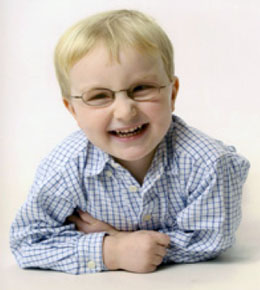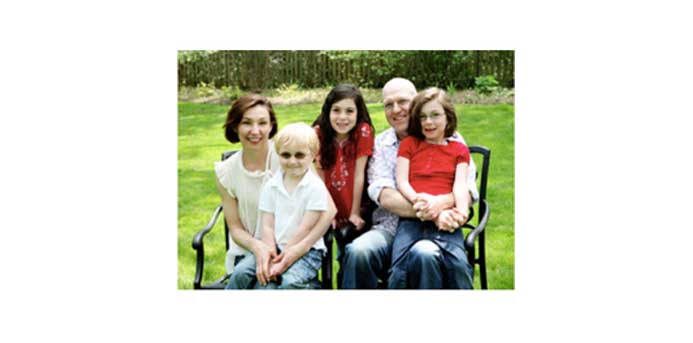There’s nothing like a mother’s love. But when you hear the story of Lake Forest’s Lisa Watters, you know just how true this saying is.
Originally from Australia, Lisa, her husband Brendan and their three children—Lily, Bella and Benny—have lived all over the world and looked at each new home as an adventure. To make Lake Forest feel like home, Lisa quickly became involved with Gorton Community’s Drop-In Center Board, the child care component of this historic community center.
It was in late 2007, when Lisa and Brendan began to notice that Benny’s left eye was crossing. Since their middle daughter Bella also had issues with her eyes, they weren’t overly concerned.
At first, doctors thought Benny had strabismus—a vision condition where a person can’t align both eyes simultaneously—so an ophthalmologist prescribed glasses and an eye patch. When his eye failed to get better, Benny had an MRI at Children’s Memorial Hospital in Chicago.
On Jan. 18, 2008, the Watters’ learned that Benny had Diffuse Intrinsic Pontine Glioma (DIPG), an inoperable brain stem tumor.
“It was a day that changed our lives forever,” remembers Lisa, who immediately turned to the Internet to learn all she could about Benny’s condition.
Soon she was educated on all of the latest research.
An estimated 3,410 children under the age of 20 are diagnosed annually in the United States with a brain tumor. DIPG accounts for about 250 of those cases. Brain tumors are the second leading cause of cancer-related deaths in children under age 20 in the U.S. Leukemia is the first.
The prognosis for tumors like Benny’s is 30 percent survival one year after diagnosis and 8 percent after two years.
Under the watchful eye of Children’s Memorial’s leading experts, Benny has participated in a number of clinical trials as well as rounds of chemo and radiation.
“We’re in a good period now. Benny’s tumor continues to grow—but it’s growing very slowly. And it hasn’t impacted his speech or his motor skills. Benny acts like any other 4-year-old boy would,” says Lisa, who says Benny is signed up for preschool this fall.
In spite of her inspiring optimism and cheerful outlook, waiting for a change in Benny’s health is never far from Lisa’s mind.
“I’m always in this manic state getting things ready in case something happens,” Lisa explains. “I think back to the day we got the diagnosis on Benny. It was the night after I’d hosted a Gorton meeting in my home. When we got the news, these same women came over to clean my house. It was a terrible mess. And as ridiculous as this sounds, and how unimportant in comparison to what’s happening with Benny, I won’t let my house get like that again,” Lisa laughs. “I know this is a control thing, wanting control in a situation where I don’t really have any.”
But don’t for a minute think that Lisa is down and out.
Because of the lack of awareness around DIPG and the limited funding earmarked for DIPG research, Lisa and her family founded Benny’s World, a non-profit foundation established to fund research to find a cure for pediatric brain stem tumors.
“Our friends were always asking how Benny was doing and what they could do to help,” Lisa says. “Benny’s World has provided a way for people to be close to Benny while raising money for research that might lead to a cure for tumors like Benny’s.”
While Lisa was heavily involved in the day-to-day running of Benny’s World last year, she’s now more focused on creating memories for her family.
“Benny’s World has taken off and I’m so thankful others are running with it,” Lisa says. “A diagnosis like Benny’s gives us permission to do things we otherwise wouldn’t—really taking advantage of beautiful days when we have them instead of doing some chore we can put off until later. Those can wait.”
To learn more about Benny or the Benny’s World Foundation, visit their Web site at www.bennysworld.org.

